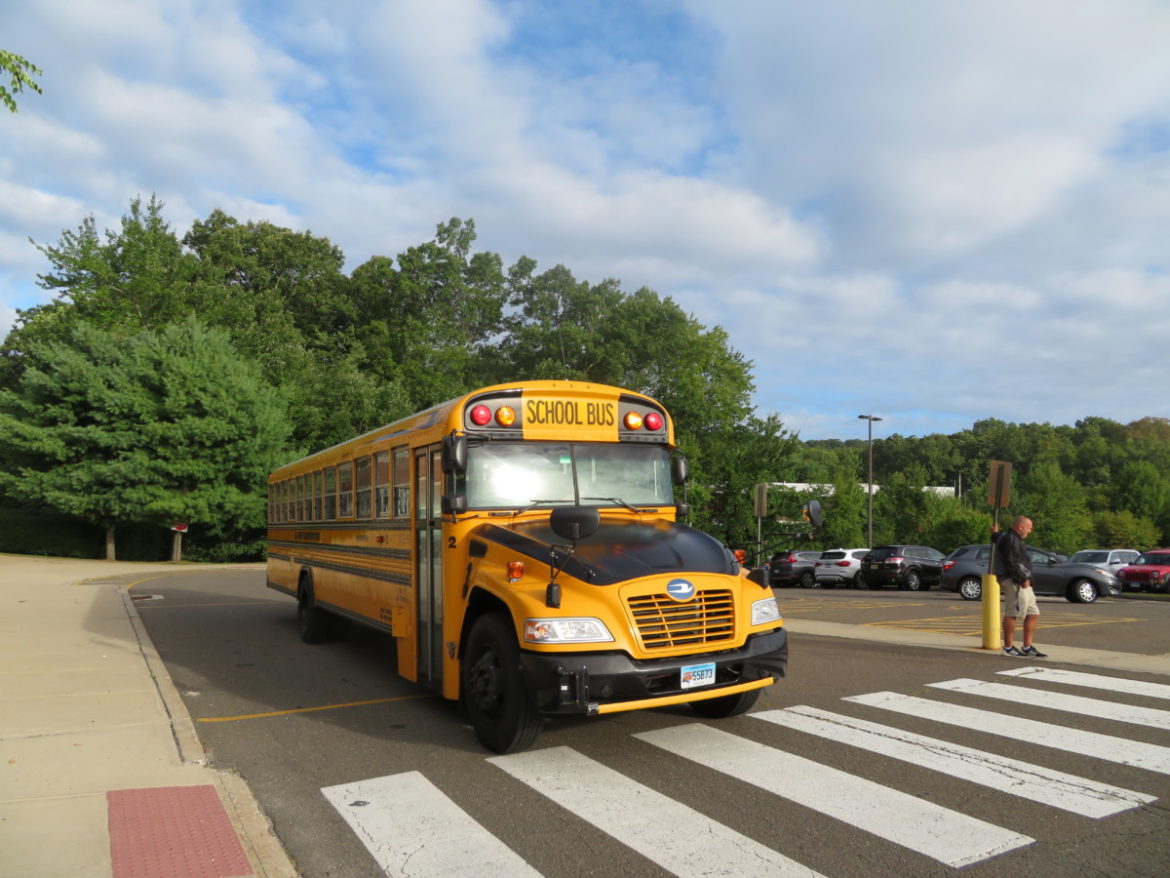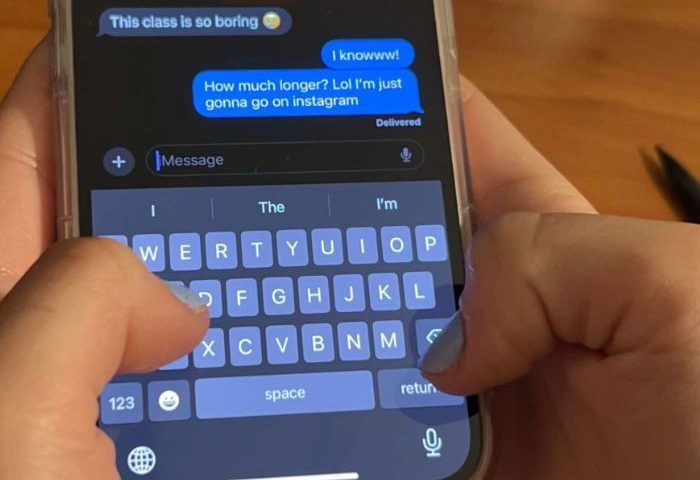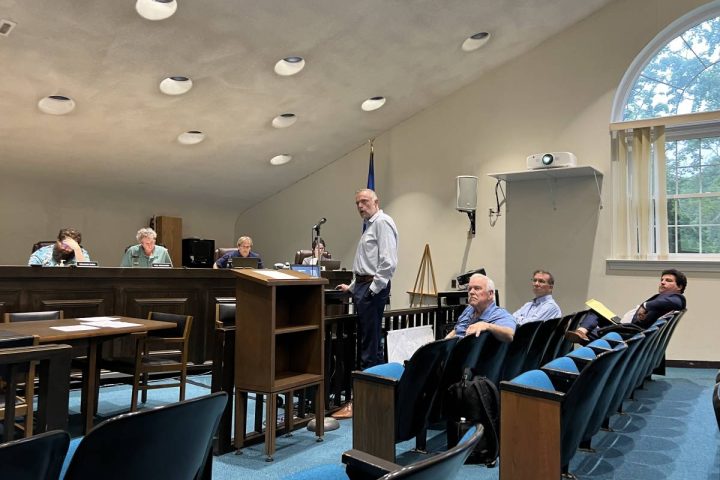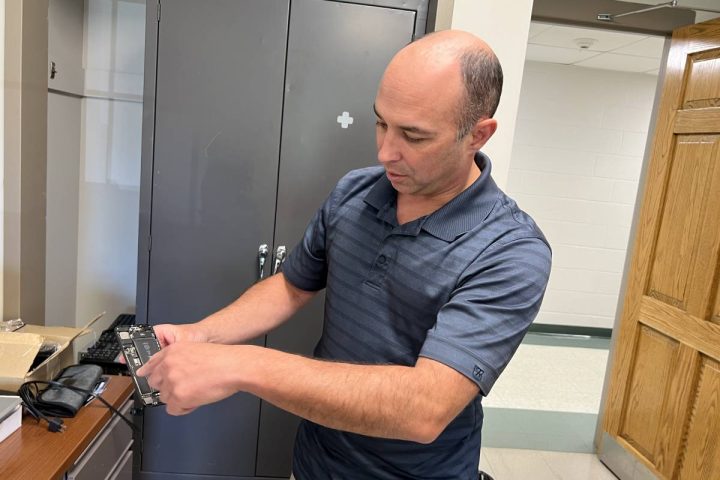MONROE, CT — Sodexo is offering school lunches under its Seamless Summer Option program so the meals are free to all Monroe residents under the age of 18, whether they are enrolled in Monroe public schools or not.
It is part of the effort to increase participation in the school lunch program, so the federal reimbursements per meal will help the district avoid ending the year with a deficit.
Monroe public schools usually pays nothing for its school lunch program, which pays for itself through sales and federal grants for free meals in the National School Lunch program, but remote and hybrid learning amid the COVID-19 pandemic has hurt sales this year.
The federal government pays the school district $1.89 per breakfast and $3.51 per lunch in the National School Lunch Program.
Though Masuk High School is not enrolled in the National School Lunch program, its students are eligible for free meals in Sodexo’s Seamless Summer program.
Shannon Monaco, a Board of Education member, said she has read comments on social media revealing how many parents were unaware that their children are eligible for the free meals.
Superintendent of Schools Joseph Kobza said he will try to get the word out to families who do not have children enrolled in Monroe’s public schools.
$120,000 in savings
At Tuesday’s school board meeting, Kobza introduced Alan Dean, district manager at Sodexo, and John Hoyt, the company’s food service director, and went on to share the plan to address the running debt in the school lunch program, caused by the lack of revenue from remote and hybrid learning.
Sodexo offered to amend its agreement with Monroe public schools to save the school district money by restructuring its administrative and management fees.
Kobza stressed how the district still must pay for other things like products, labor, benefits, wages and packaging.
All of Monroe’s schools, with the exception of Masuk, are enrolled in the National School Lunch program. For those schools, Sodexo offered a new management fee of 32 cents per meal, rather than a fixed fee.
The new fee cannot exceed $38,260, which is the original fixed fee. Kobza said the district will pay whatever is less.
Sodexo also offered 32 cents per meal, not to exceed the administrative fee of $54,255, whichever is lower.
Board of Education members unanimously agreed to the amendment.
Sodexo also offered an amendment to eliminate the administrative and management fees for Masuk, which the board unanimously agreed to.
“Even though, contractually, we’re not obligated to change the fee structure, I feel like it’s the right thing to do and a good partnership,” Dean said.
He said Sodexo usually receives around $170,000 in fees in a typical year.
“Based on this proposal, I expect to bring in around $50,000 or $60,000 in fees for the year, so the district will save about $120,000,” Dean said. “It’s really our way of partnering with you in trying to find some ways to bring relief.”
Dean said his goal is for the lunch program to break even by the end of the year.
The bagel meal
In response to comments about the food at a Board of Education meeting in early December, Dean said Sodexo revamped its menu for January, expanding it from two-to-three choices to almost a full menu for both in-school hybrid and remote learning.
“If we get back to a place where it’s 100 percent remote learning, the menu will differ,” he said.
Dean said he approached Kobza Tuesday afternoon about sending families another survey on Google Docs asking questions like: “Are you taking the three meals today, if not why? Are you happy with the choices? What would you like to see in terms of variety.”
“We’ll have a robust menu,” Dean said. “We can expand the service points. We can expand the service hours. Try to be more convenient for all those involved.”
“Currently, the full distance learners are only getting two choices per day, but we added some hot meals that can be reheated at home with instructions in the bags,” Hoyt said. “We’re trying to give them more variety, but surprisingly, still probably one of the most popular items is the bagel meal.”
Monaco said she is not surprised, adding the macaroni and cheese bites and chicken nuggets are also favorites.
“The number one entrée was chicken nuggets today, cheese stuffed pasta sticks for tomorrow,” Hoyt said.
He said the bagel meal is not the only second menu option, adding there is a choice of yogurt with blueberries and there are still side orders of a vegetable and milk.
David Ferris, a board member who has children in the school system, said he appreciates the surveys, which have led to improvements in the quality of the food.
A notice for school lunches goes out on Thursdays with signup sheets for the following week. Families sign up, choosing from among the options. Hoyt said the deadline is 10 a.m. on Friday, though he usually keeps it open until noon to get any stragglers.
Concern over food waste
Some board members expressed concern over food waste when kids don’t want some of the meals or sides.
“We can certainly work with the food pantry and tell families, ‘look, if you don’t want the meals, please take it to Pantry A or Pantry B, because there are a lot of folks who are in need right now,” Dean said.
Monaco said the Monroe Food Pantry could have a drop-off box or something.
“It can’t be just us. You’re a food service provider to other districts,” said Nick Kapoor, a board member. “This must not be the only place this is happening. I heard from several parents over the weekend who said, ‘we don’t want this. We don’t know what to do with this.'”
Kapoor said if the district is in hybrid learning for an extended period, hundreds of thousands of pounds of food could be thrown away. “I think this should be a priority and whomever needs to get involved at an official level, it needs to be done and be done ASAP,” he said.
Dean said there was more flexibility when schools were in full in-person learning. For example, when regulations for lunches changed about seven years ago, kids were required to take fruit and vegetables, whether they wanted it or not, according to Dean.
“We placed fruit baskets in schools, so kids could get a second snack,” he said of reducing the amount of food that would have gone to waste. “It was easier when kids were in the schools. Now that it is remote, we have to figure out what to do with the unwanted food. That’s a priority.”








